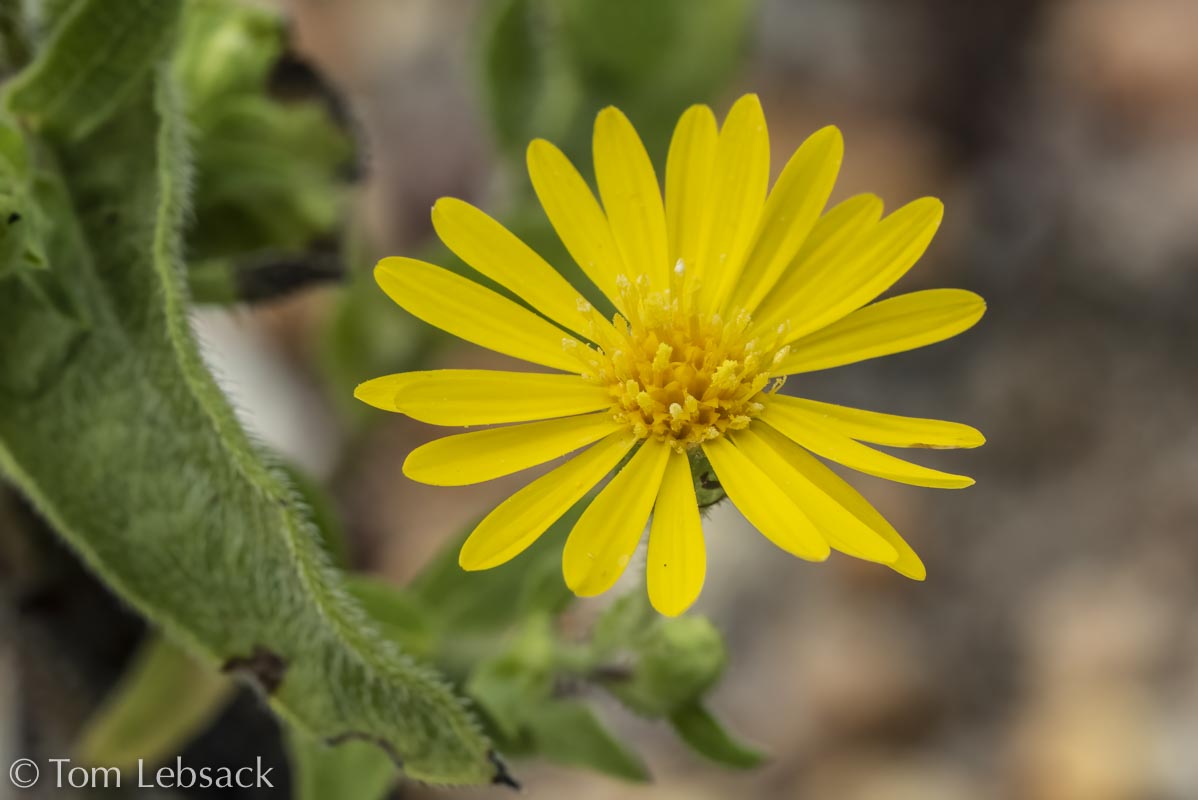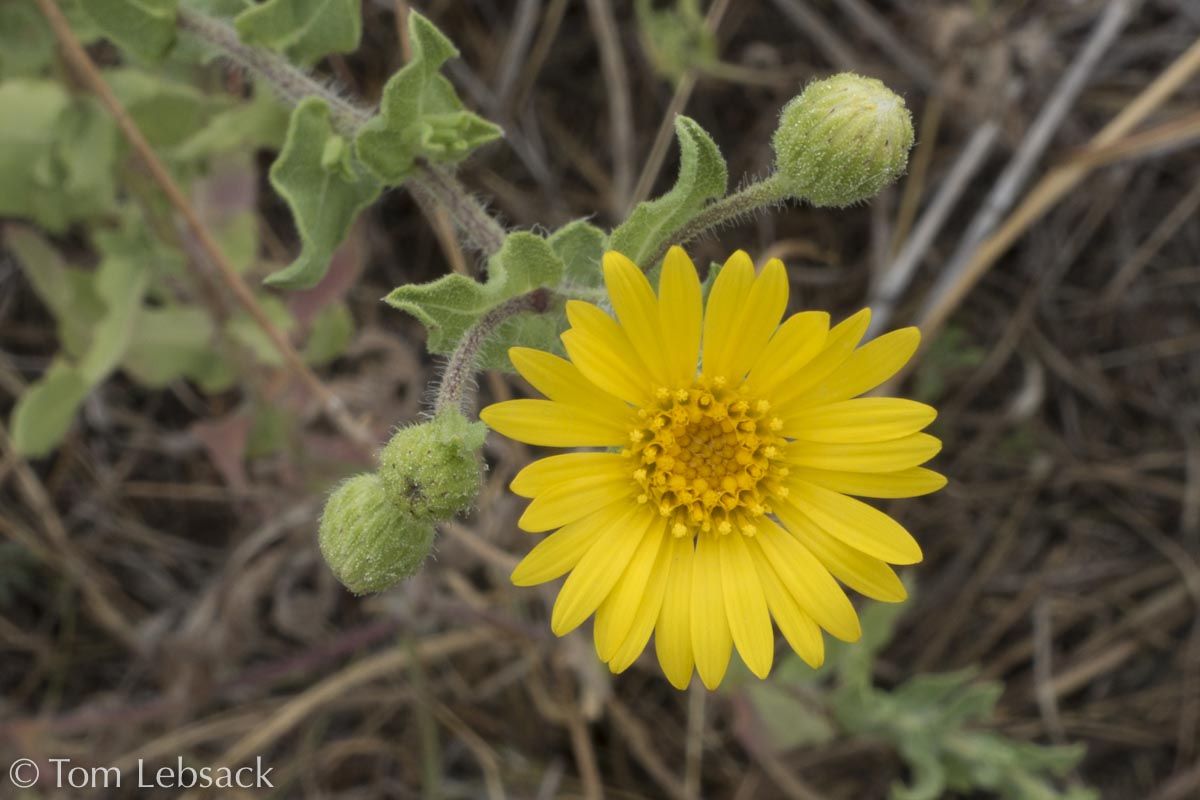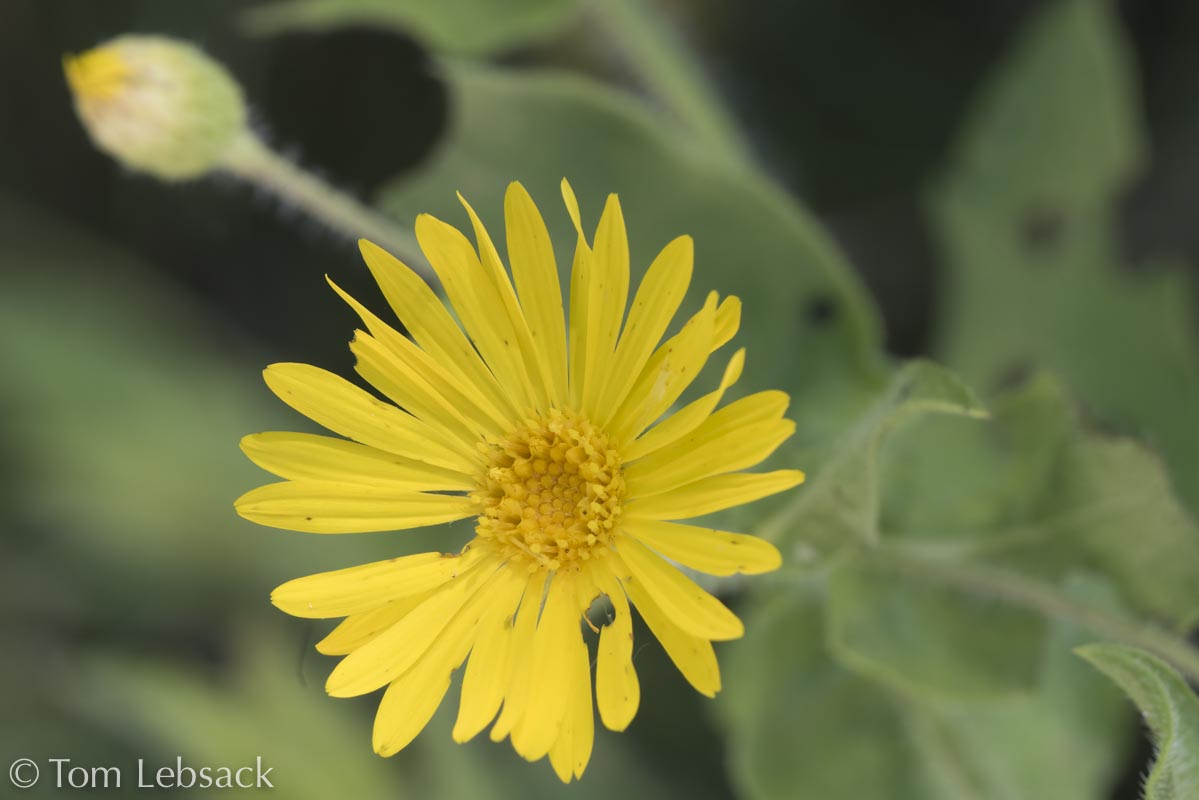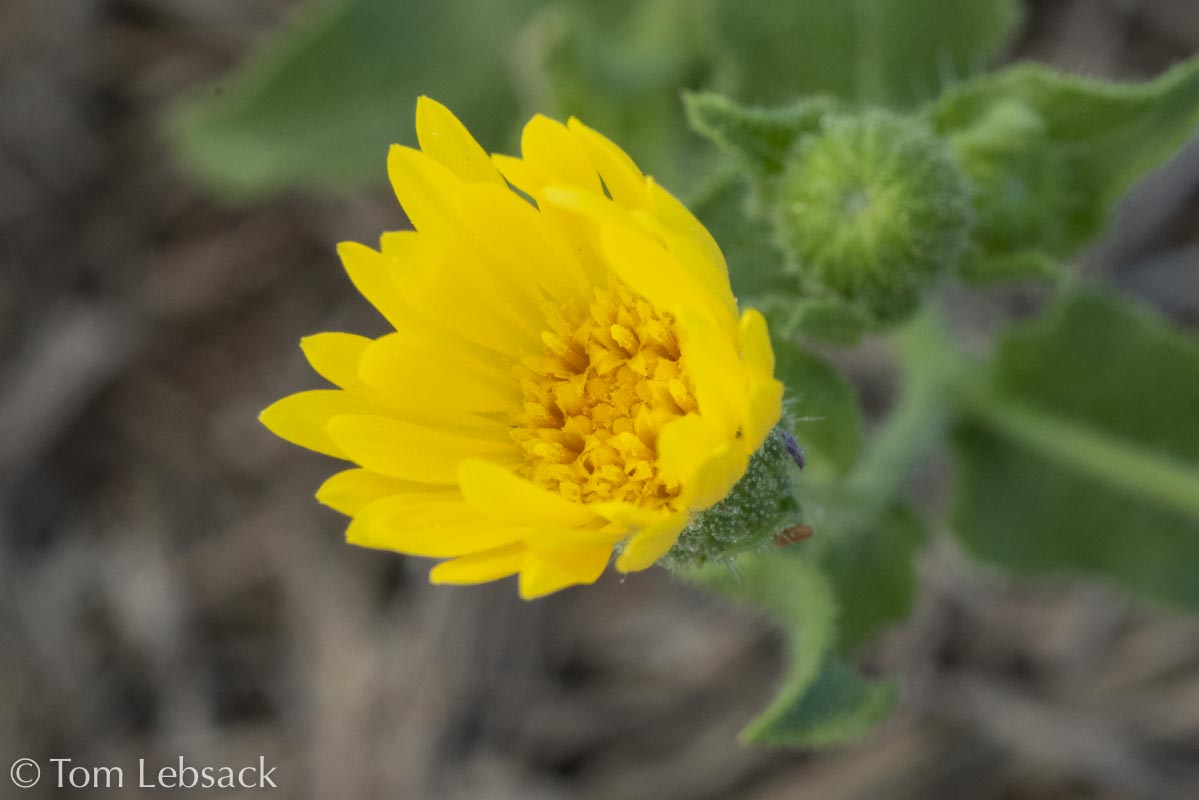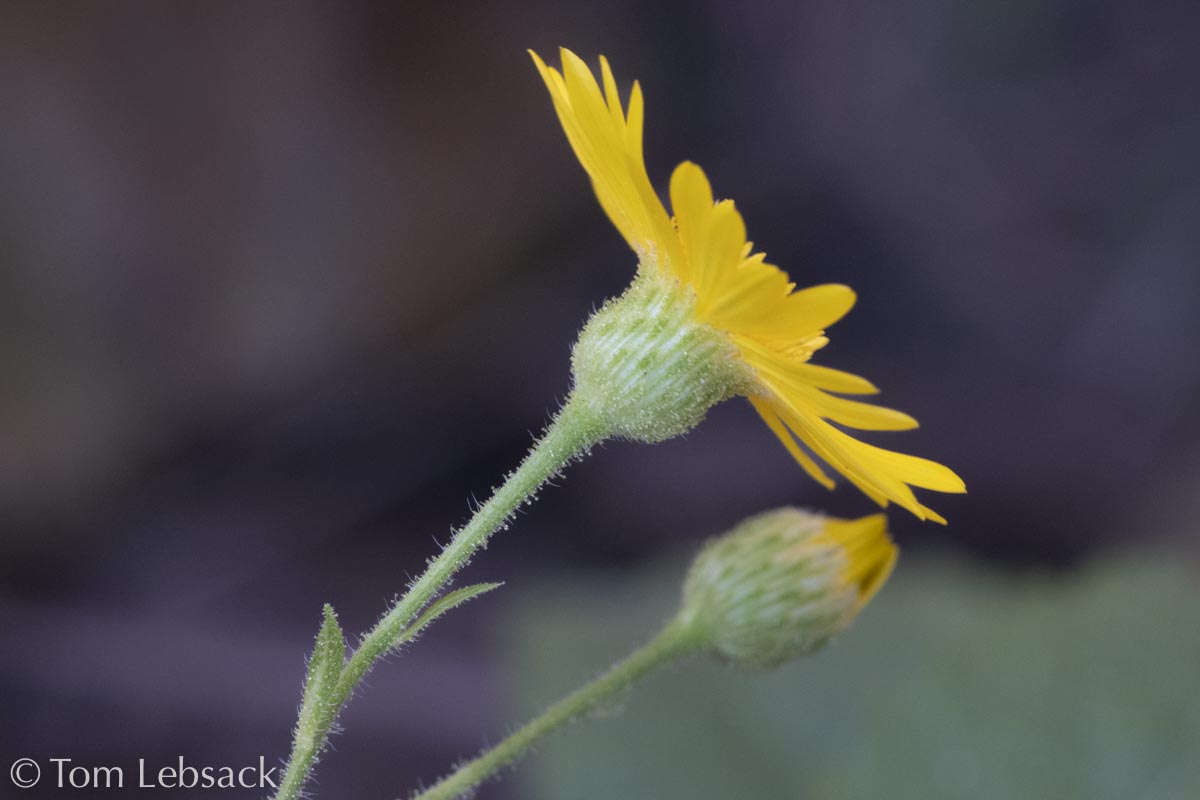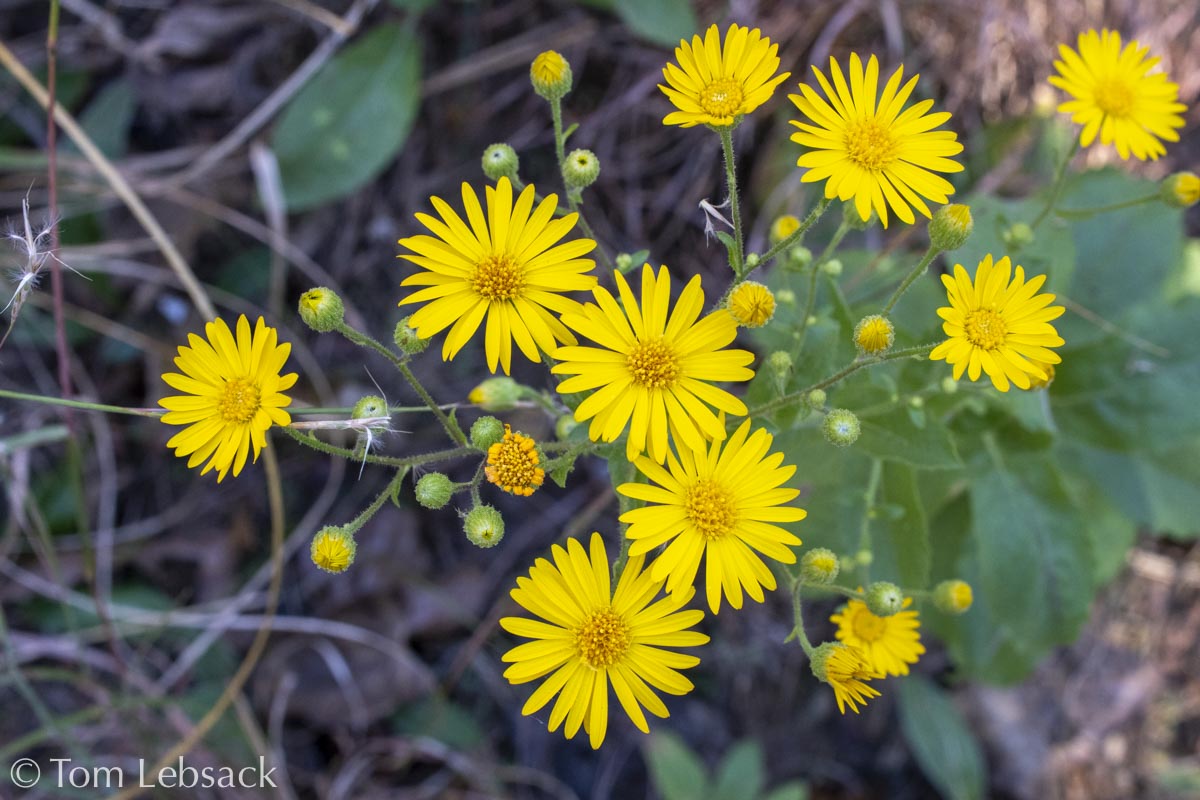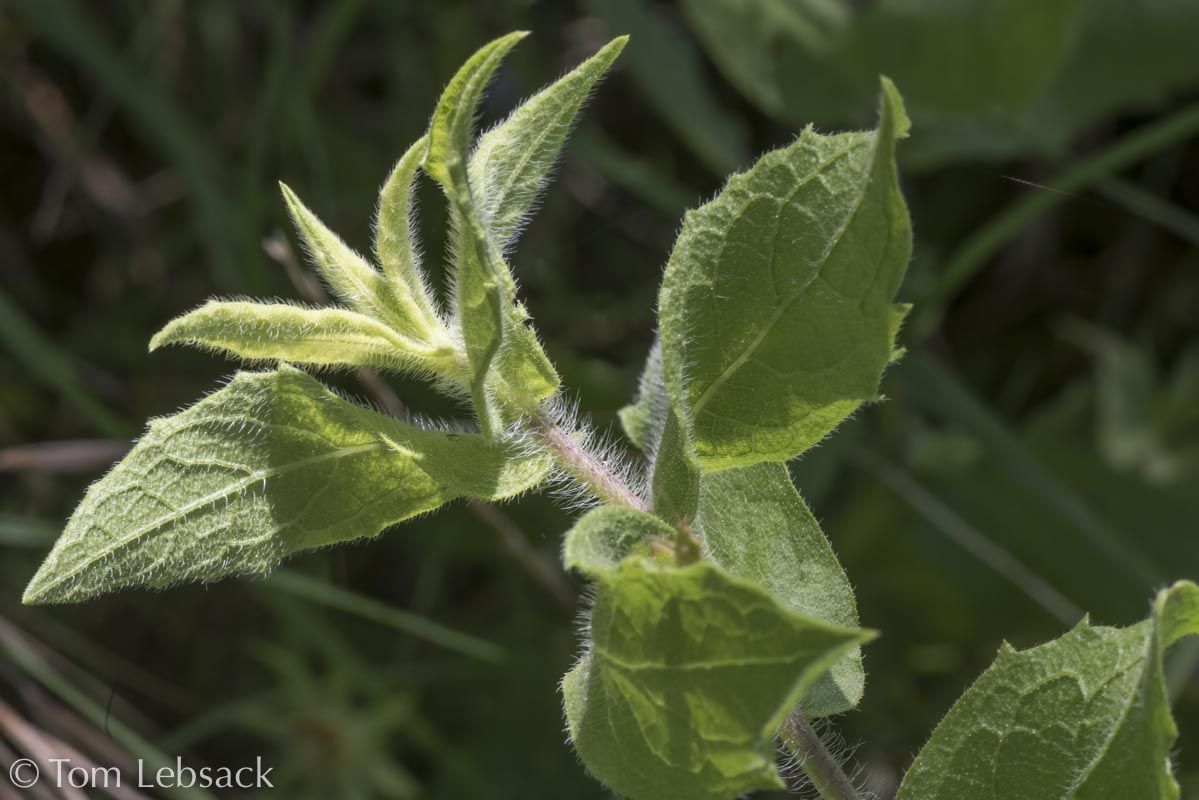Texas Wildbuds
Heterotheca subaxillaris
(Camphorweed)
| Scientific Name | Heterotheca subaxillaris (Heterotheca latifolia) | USDA PLANTS Symbol | HESU3 |
| Common Name | Camphorweed, Goldenaster | ITIS Taxonomic Serial No. | 37686 |
| Family | Asteraceae (Sunflower) | SEINet Reference |
Click Here |
| Description |
Habitat: Sandy soils in disturbed areas, roadsides, prairies, rangelands. Plant: Erect or widely sprawling annual usually 1 to 3 feet tall; single hairy, green stem with branches near top. Leaves: Curly upper leaves, alternate, clasping, ovate to lanceolate and up to 2-3/4 inches long; the margins are flat or undulate and coarsely serrate or entire; the surfaces are sparsely to moderately stiff-hairy and somewhat to densely glandular; very aromatic (camphor smell). Lower leaves usually fall off by flowering time. Inflorescence: Composite flower heads atop each branch, 5/8 to 1-inch across, in corymbo-paniculiform arrays, 15 to 35 yellow rays and 25 to 60 yellow disk florets in the center. Bloom Period: May to October. References: "Wildflowers of Texas" by Geyata Ajilvsgi and SEINet. |
BONAP Distribution Map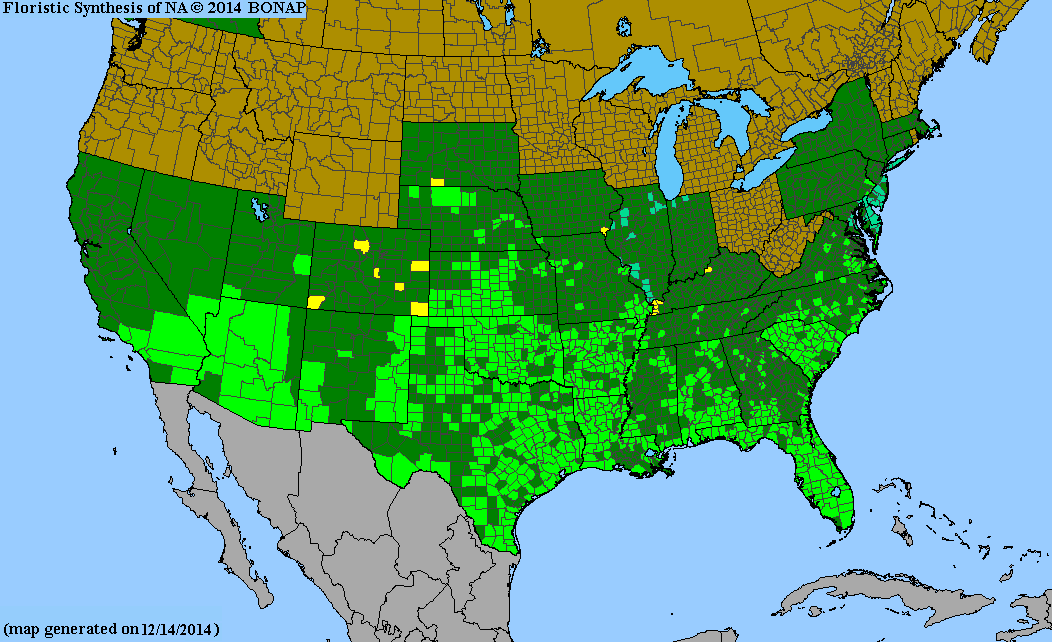 Map Color Key |
Texas Status: Native |
Banner photo of Castilleja indivisa and Lupinus ssp. taken along FM 1323 north of Johnson City, Blanco County
© Tom Lebsack 2025
Every attempt is made to provide accurate, up-to-date, and relevant information, but the completeness or accuracy of any information presented on this website cannot be guaranteed. I use authoritative references to insure high standards of accuracy and review and update the information frequently.
